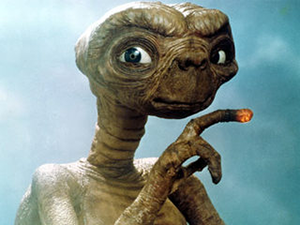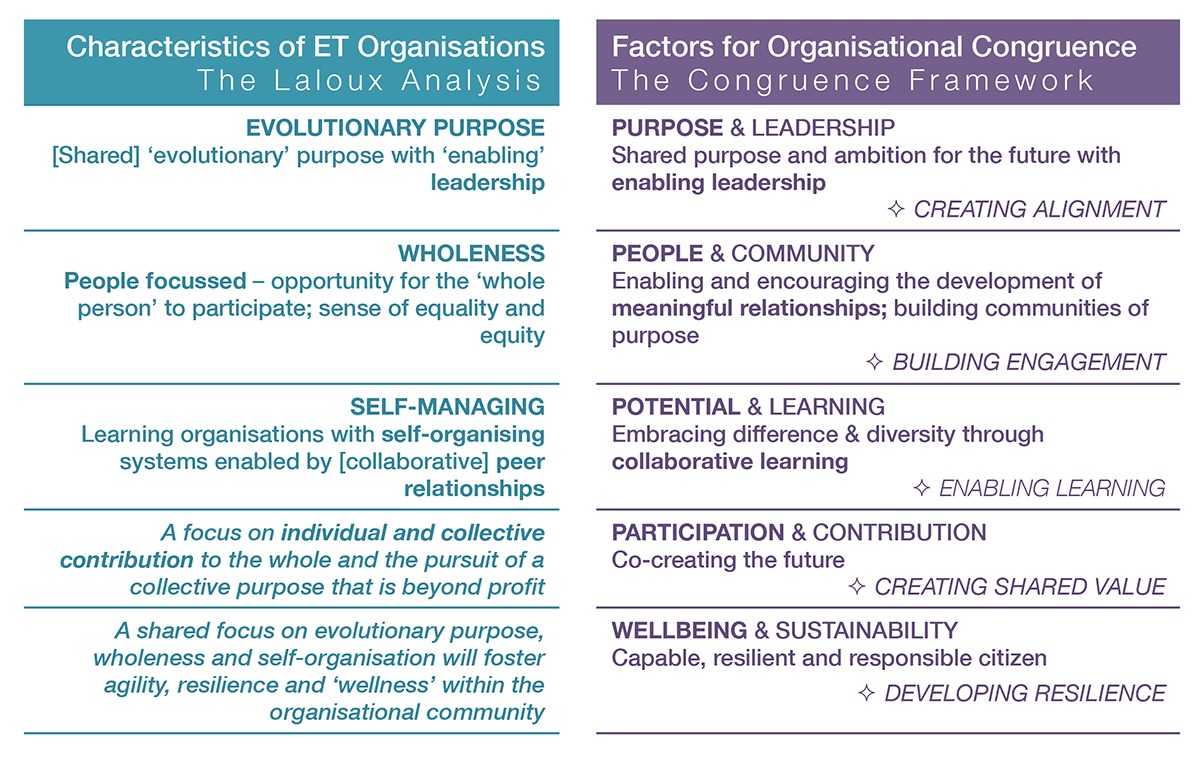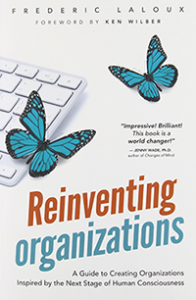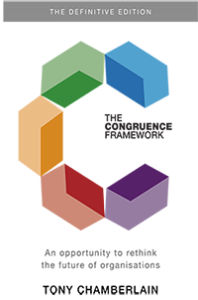How emerging organisational models are responding to a shift in global consciousness
‘Can we create organisations free of the pathologies that show up all too often in the workplace? Free of politics, bureaucracy, and infighting; free of stress and burnout; free of resignation, resentment and apathy; free of posturing at the top and the drudgery at the bottom? Is it possible to reinvent organisations, to devise a new model that makes work productive, fulfilling and meaningful?
Can we create soulful workplaces – schools, hospitals, businesses and nonprofits – where our talent can bloom and our callings can be
honoured?’
Frederic Laloux asks these questions in his book ‘Reinventing Organisations’. The answers, he suggests, are to be found partly in our history, which tells us that ‘with every stage of human consciousness also came a breakthrough in our ability to collaborate, bringing about a new organisational model’.
Laloux traces this development from 100,000 BC to the present time, observing a gradual but accelerating evolution from simple ‘family kinships’ to the emergence of a new organisational model. He calls this model the Evolutionary-Teal model (ET model). The ET model’s development can be seen as a response to an expanding global consciousness – a growing awareness that ‘the ultimate goal in life is not to be successful or loved, but to become the truest expression of ourselves…and to be of service to humanity and our world…[to see life] as a journey of personal and collective unfolding towards our true nature’.
Many writers and commentators would reference this expansion in global consciousness as the ‘rise of mindfulness‘.
Laloux’s case studies of a small group of diverse organisations, all responding to this shift in global consciousness, revealed that each organisation was pursuing self-organising models. These models embrace the ‘adaptive, flexible, self-renewing, resilient, learning, intelligent-attributes found only in living systems’ (Margaret Wheatley). Laloux’s studies also revealed ‘three major breakthroughs’ in the way that these organisations focused on engaging their organisational community. They all demonstrate:
- A commitment to an evolutionary purpose – collaborating with their people to unfold a future grounded in a shared purpose rather than trying to manage the pursuit of a predicted future;
- An emphasis on wholeness – an invitation for the ‘whole person’ to participate, a workplace where each person’s ‘emotional, intuitive and spiritual parts’ are welcome and respected and where the adoption of ‘social masks’ becomes irrelevant and therefore unnecessary; and
- A preference for self-management – replacing the constraints of traditional hierarchical and consensus control systems with agile self-organising systems that are enabled by [collaborative] peer relationships.
But these are not the only differentiating characteristics of ET organisations. Laloux’s case studies also make it clear that ET organisations enjoy a particular style of leadership. Their leadership is in tune with shifts in global consciousness (mindful leadership); leadership that believes in a shared evolutionary purpose (purposeful leadership); leadership that embraces and enables the ‘whole person’ (servant leadership); and leadership that facilitates development of the collaborative peer relationships that enable organisational learning and self management (complexity leadership).
I suggest that the synthesis of these different leadership styles is to be found in enabling leadership – leadership that ‘is about contribution through service…fosters organisational cohesion around a shared purpose…builds meaningful relationships within its stakeholder communities…encourages participation and collaboration…and always acknowledges the potential of the organisation’s people’ (The Congruence Framework).
The self-organising and self-managing nature of ET organisations suggests that they must also be learning organisations – ‘Organisations where people continually expand their capacity to create the results they truly desire, where new an expansive patterns of thinking are nurtured, where collective aspirations are set free, and where people are continuously learning to see the whole together’ (Peter Senge).
These five common characteristics of ET organisations – evolutionary purpose, enabling leadership, wholeness, self-organising and learning – are closely aligned with the essential factors and conditions for developing organisational congruence.
As the author of The Congruence Framework I am encouraged that my framework for ‘rethinking the future of organisations’ can so easily ‘frame’ the approach that these ET organisations are taking to ‘reinvent their organisations’.
I am also encouraged by the Laloux case studies. Although small in number, they clearly demonstrate how the Congruence Framework could be applied to diverse organisations in different geographies to influence the development of organisational congruence – the harmonious alignment of people with the communities and organisations they interact with.
As Laloux observes, the evolution of ET-like organisations can be seen as an emerging response to an expanding global consciousness. This consciousness is also evident in the increasing global attention to the practice of mindfulness.
It is interesting to note that the commitments to ‘evolutionary purpose, wholeness and self-management’, which characterise ET organisations, are also the commitments that will enable the practice of mindfulness in these organisations.
Mindfulness provides a pathway towards the purposeful presence of individuals (and their organisations) in the world – a presence that manifests our purpose in all that we do. Developing a purposeful presence is also at the heart of becoming more congruent individuals and organisations – purposeful people and communities with the confidence and resilience to ‘let go’, to respond positively to change and adversity, and thus to unfold their future together.
To learn more about congruent organisations please read my book The Congruence Framework and to appreciate the connection between mindfulness and congruence take a minute to read my post on The Mindfulness of Congruence.
Books mentioned in this post include:





The benefit and power of self organising organisations caught my attention in the 1990s through the introduction of self directed work teams in the organisation that i was part of at the time. Modelled largely on the approach and outcomes that Ricardo Semler had achieved at Semco. Can be very confronting for traditional minded individuals yet if you are open minded it can be incredibly fulfilling.
The ET model will also challenge the predominant way of thinking and will take time to evolve. The ultimate goal in life resonates so well with me. Becoming a true expression of myself sits well with one of my my life values, that of authenticity. It is a powerful feeling when you live your life values every minute of every day.
I have become exposed to mindfulness throughout my journey of life over the past 18 months. I can concur that it is such a powerful practice and you can spend your entire life mastering it
I was interested to compare your framework alongside Laloux’s ET organisational characteristics. It is significant that there is congruence between the two. Must say, though, that I’m daunted by the inertia I see in large organisations and corporations that would resist the opportunities offered by the CF and ET. I guess it means chipping away, from the top and bottom, or sides.
Enabling leadership seems like an absolute essential to really bring about this transformation.